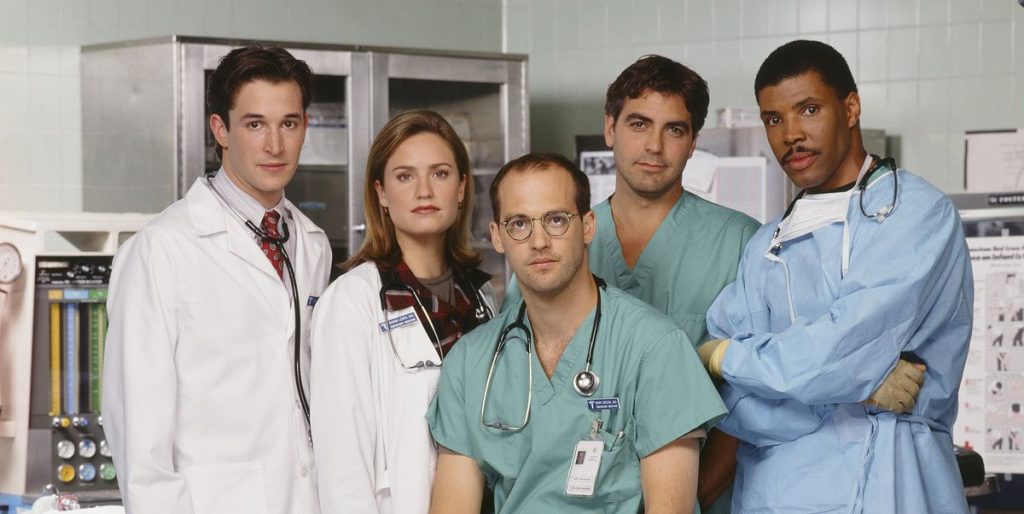Why Doctors Wear Green (or Blue) Scrubs

The image above shows some of the original cast from the long-running hospital drama, ER. You don’t need to know anything about the people depicted except that four of the five and one is a medical student. But you probably could have figured out that they are all doctors or doctors-to-be simply by what they’re wearing. Two are in white medical lab coats while the other three are in scrubs. Those scrubs — green and blue, above — are usually used when doctors are performing surgery of some sort, and it’s rare to find doctors wearing scrubs of a different color. So, where did blue and green scrubs come from, and why do we rarely see pink or yellow or purple ones?
Mostly, to prevent headaches and help with focus.
Scrubs are a somewhat modern invention. Until the early 1900s (which was only a century ago), surgeons often just wore their regular clothes and donned an apron to keep the blood from staining their everyday attire. Having a blood-soaked apron was even a sign of a good doctor — if the guy you wanted to use as a surgeon had a lot of blood and guts on him, it showed that he probably had the experience necessary to do the job. But after the Spanish Flu hit, cleanliness became a more important question. Doctors began to wear white uniforms to make it clear that they weren’t covered in who knows what.
But there was a problem with the white operating room attire — and no, it wasn’t the bloodstains. Operations can sometimes take a long time and, in any event, the doctors and nurses need to be able to focus. While most of that focus is on the open body in front of them, they also need to look around the room and at each other. And as Mental Floss explains, all-white uniforms “led to eyestrain and headaches for surgeons and their staff.” You don’t want to have that happen while operating on someone, so doctors looked for other solutions.
So just as quickly as the white operating room dress became the norm, it fell out of favor. According to Science Line, “in the early twentieth century, one influential doctor switched to green because he thought it would be easier on a surgeon’s eyes.” Not only would green reduce eye strain, but it would also help doctors see what they were doing. As the theory goes, per Science Line, “looking at blue or green can refresh a doctor’s vision of red things, including the bloody innards of a patient during surgery. The brain interprets colors relative to each other. If a surgeon stares at something that’s red and pink, he becomes desensitized to it. The red signal in the brain actually fades, which could make it harder to see the nuances of the human body. Looking at something green from time to time can keep someone’s eyes more sensitive to variations in red.”
And, of course, it helps the bills — because you do less laundry. Per Mental Floss, “while white linens had to be frequently tossed and replaced (either because the discoloration was too bad or because frequent washing and bleaching destroyed the fabric), green scrubs have a bit of a longer lifespan.” But most likely, that’s just an added benefit. While the original reason for green (and blue) scrubs wasn’t contemporaneously recorded, it’s widely believed that eye strain — not laundry bills — was the driving force behind the norm.
Bonus fact: Why are scrubs called “scrubs”? Again, cleanliness was the impetus. While today, it seems unfathomable for a surgeon to not wash his or her hands before operating, that wasn’t always the case before the Spanish Flu hit. The widespread practice of washing one’s hands thoroughly coincided with the time period when surgeons switched to specialized clothes for the operating room. As a result, doctors would put on their clean operating room clothes and then scrub their hands. The clothes were donned when they were “scrubbing in” for surgery, and therefore, the outfit became known as “scrubs.”
From the Archives: The Battle of the Blackest Black Versus the Pinkest Pink: A color war like you’ve never seen, maybe literally.
